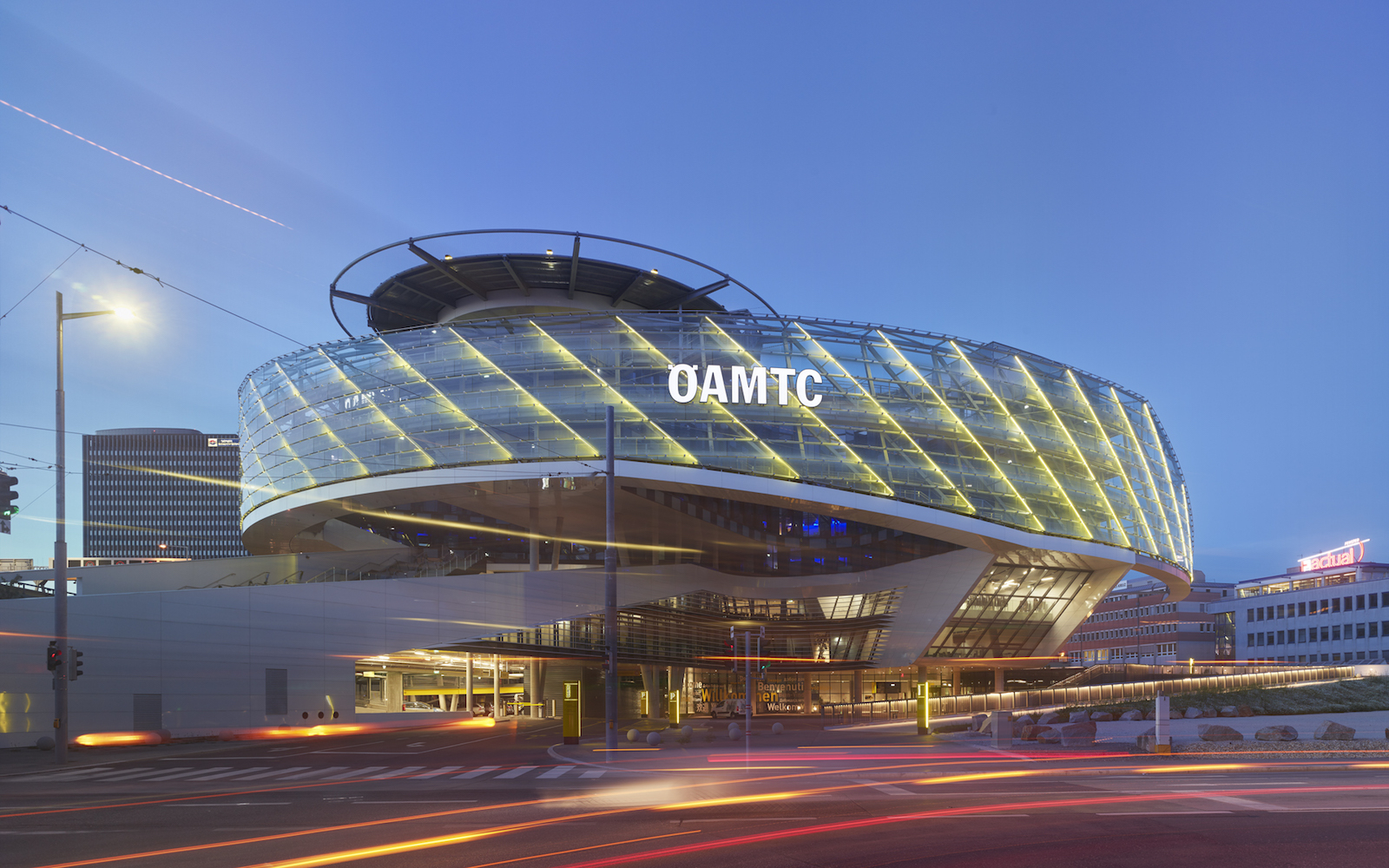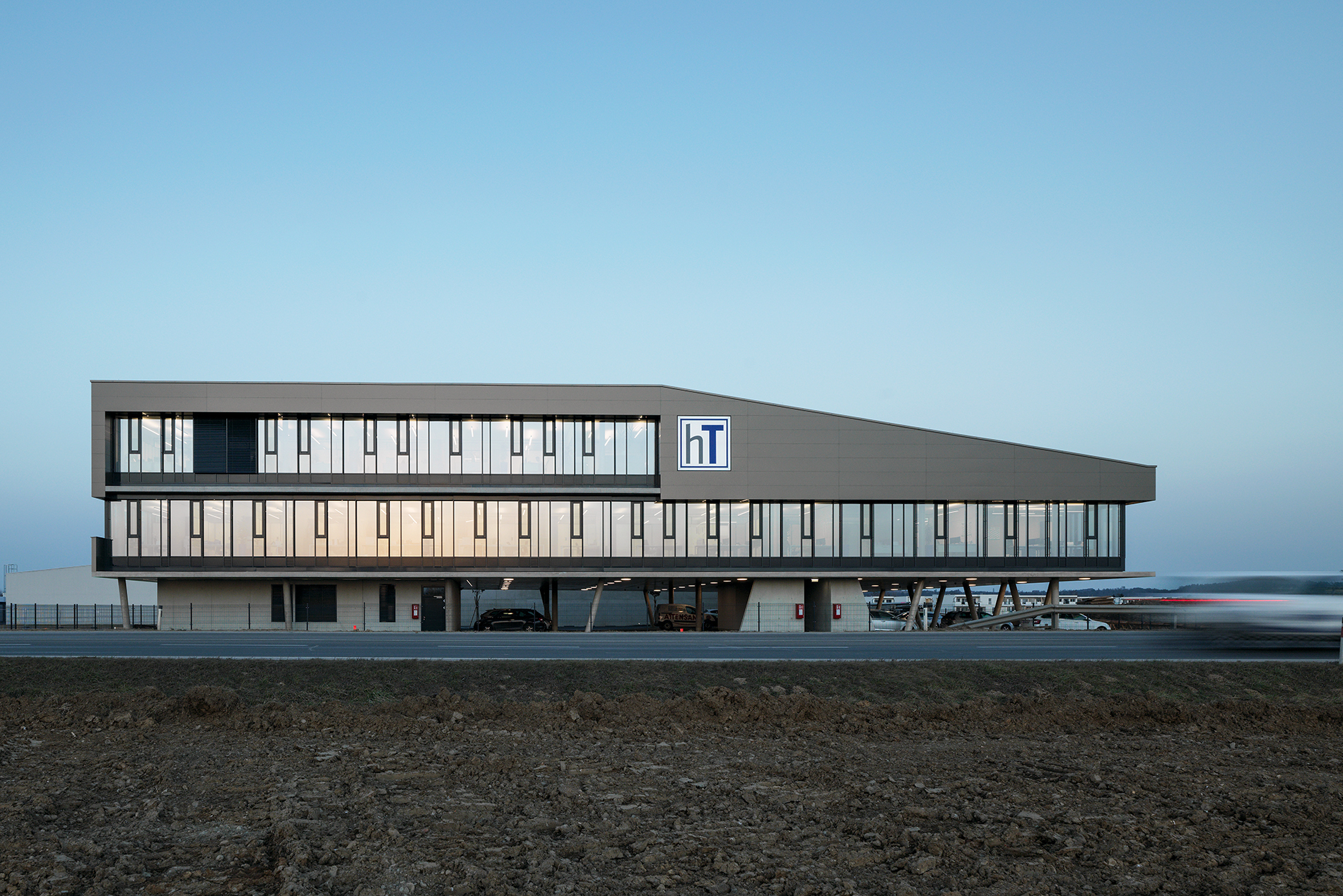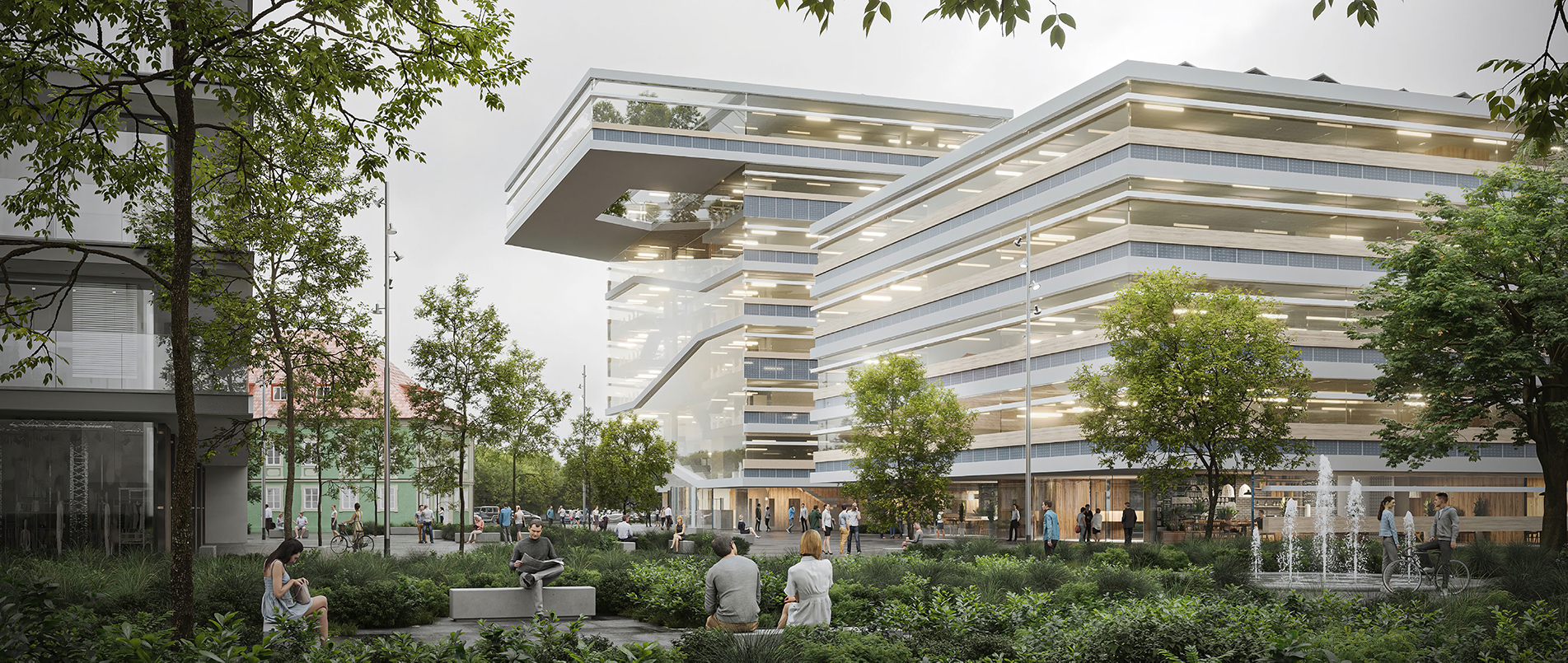The delivery and service yard is located along the northern edge of the property with the necessary additional facilities such as a filling station, car wash, etc. The warehouse is located in the core as a compact unit that is not built over. The triangular head building is located to the east, with a slender wing along Seestadtstrasse in front of the warehouse. The staff station is a lantern-like structure on the roof level of the ensemble. The “operational” entrance and exit is located on the western boundary of the site and is therefore separate from the MIV. The project is supplied with energy by means of geothermal energy.
Health and Safety Center of the Samaritan Association
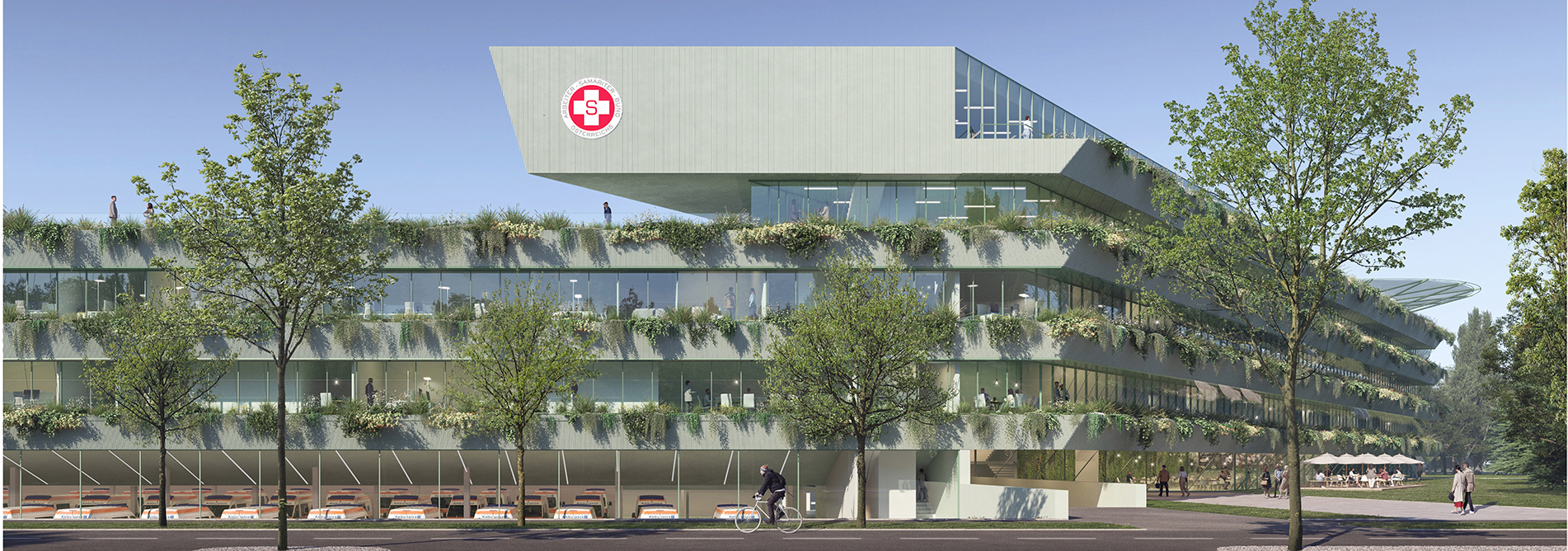
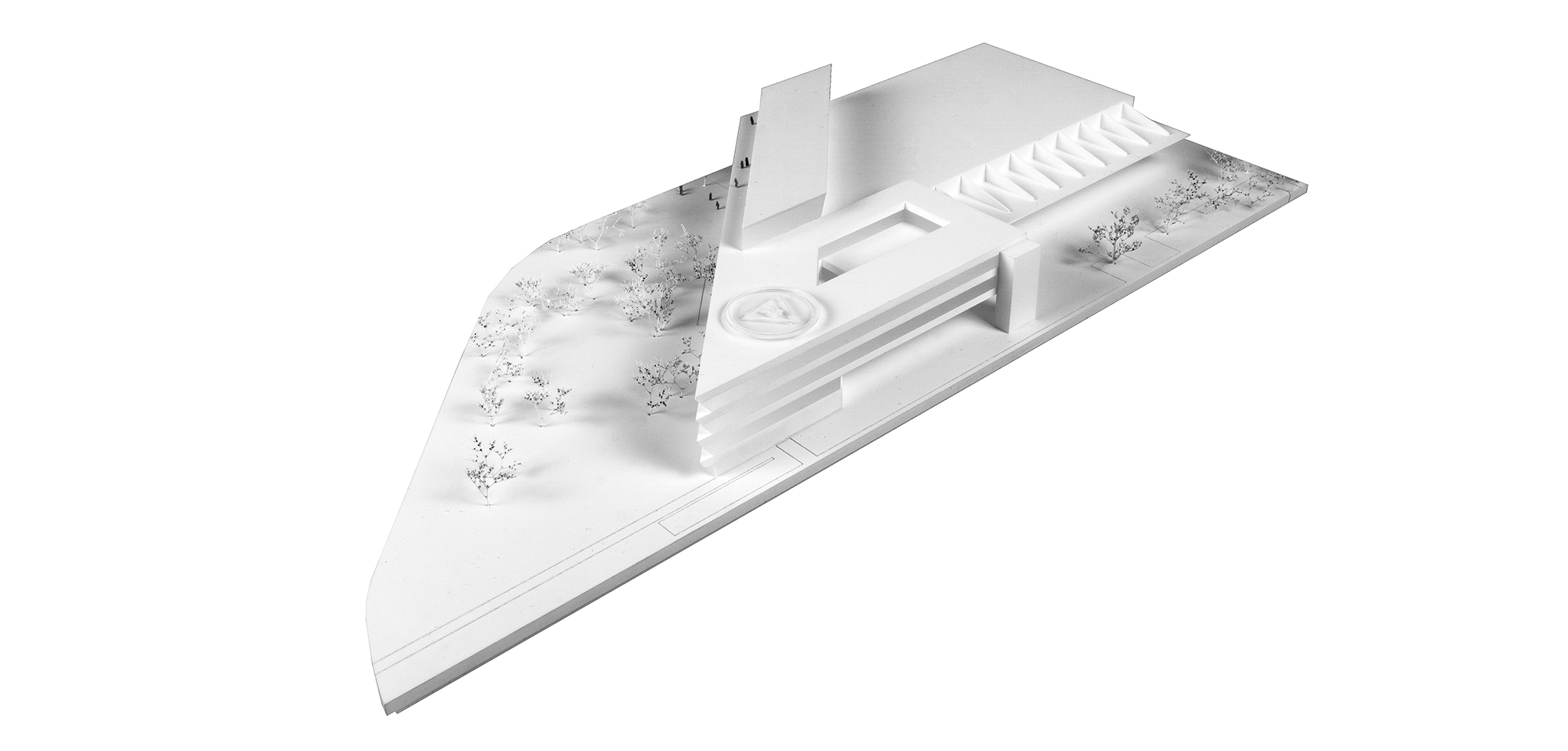
Efficient interaction between the various sub-areas and facilities with an ambitious staff is the basis of the Samaritan Association's safety center. With this in mind, the entire facility and the individual units were developed with a practical approach.
Year
2024
Venue
Vienna
State
Competition
Category
Mixed
Size
22.540 m²
Year |
Venue |
State |
Category |
Size |
|---|---|---|---|---|
2024 |
Vienna |
Competition |
Mixed |
22.540 m² |
Year
2024
Venue
Vienna
State
Competition
Category
Mixed
Size
22.540 m²
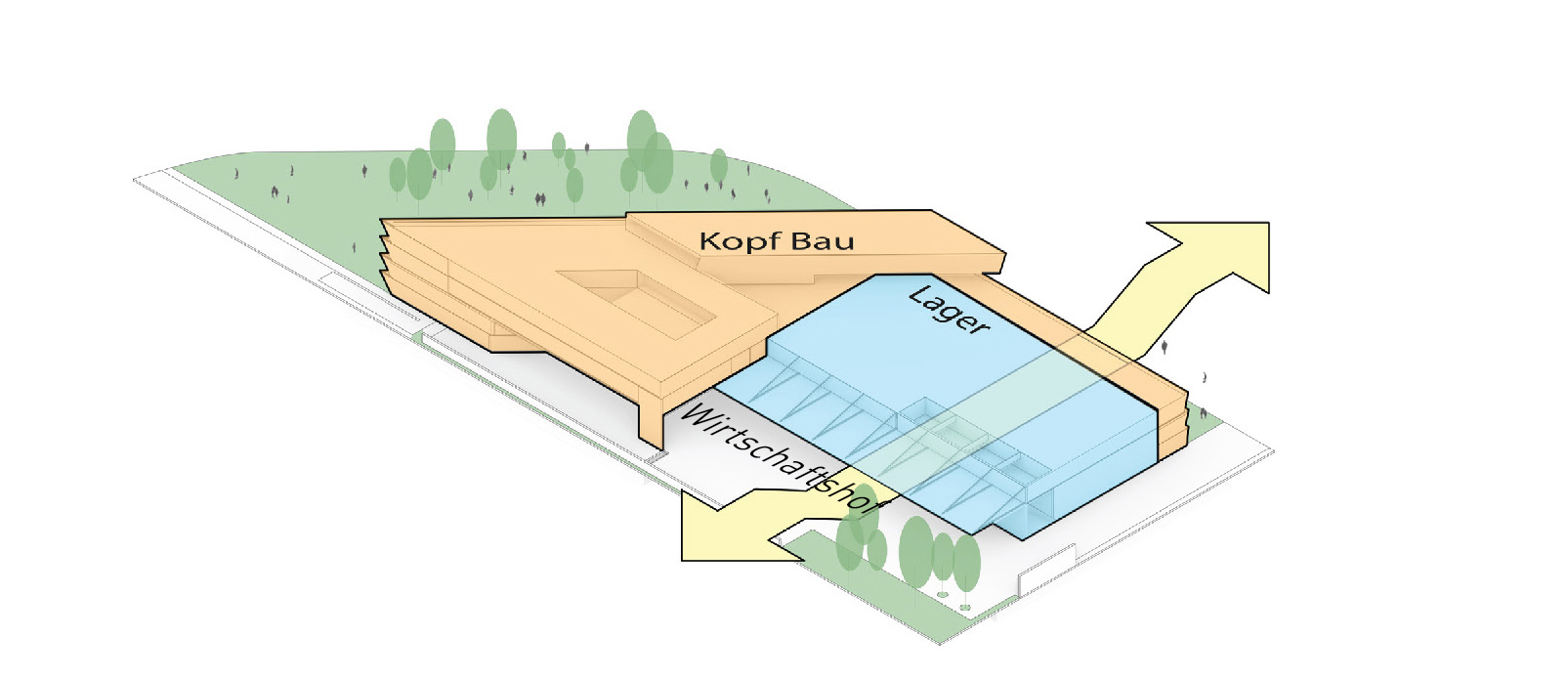
The entrances and exits were designed with the traffic planning consultant. The “operational” entrances and exits are located on the western boundary of the site and are therefore separate from the MIV. Both transport vehicles and emergency vehicles drive in and out here. Access to the garage for cars, both for external visitors and for employees and training participants, is a little further to the east near the main entrance.
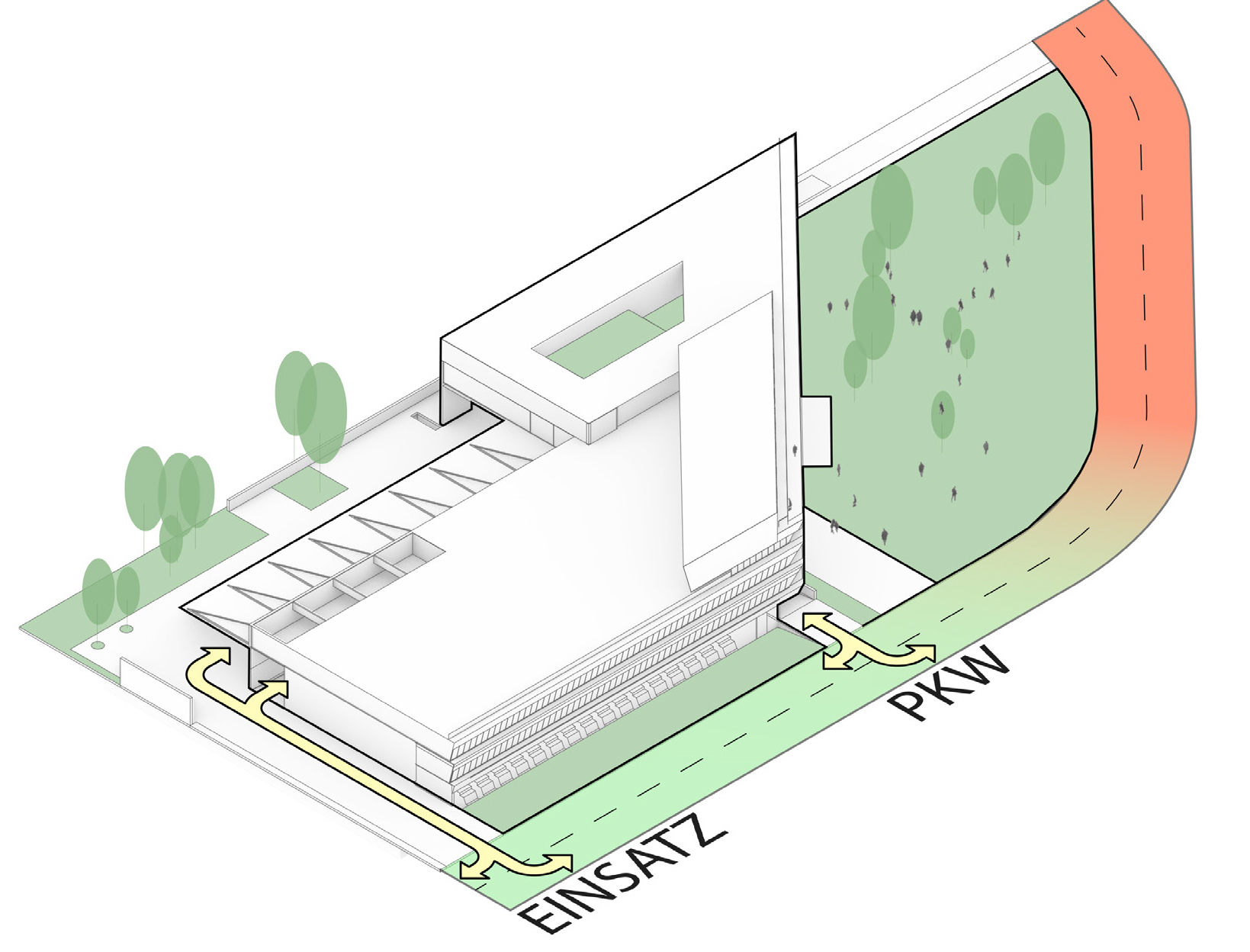
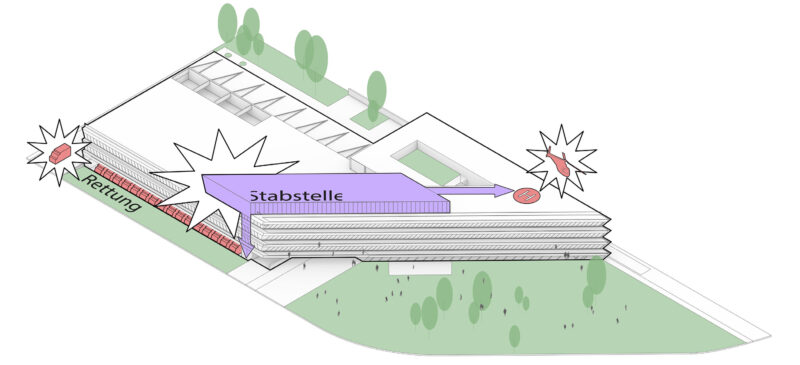
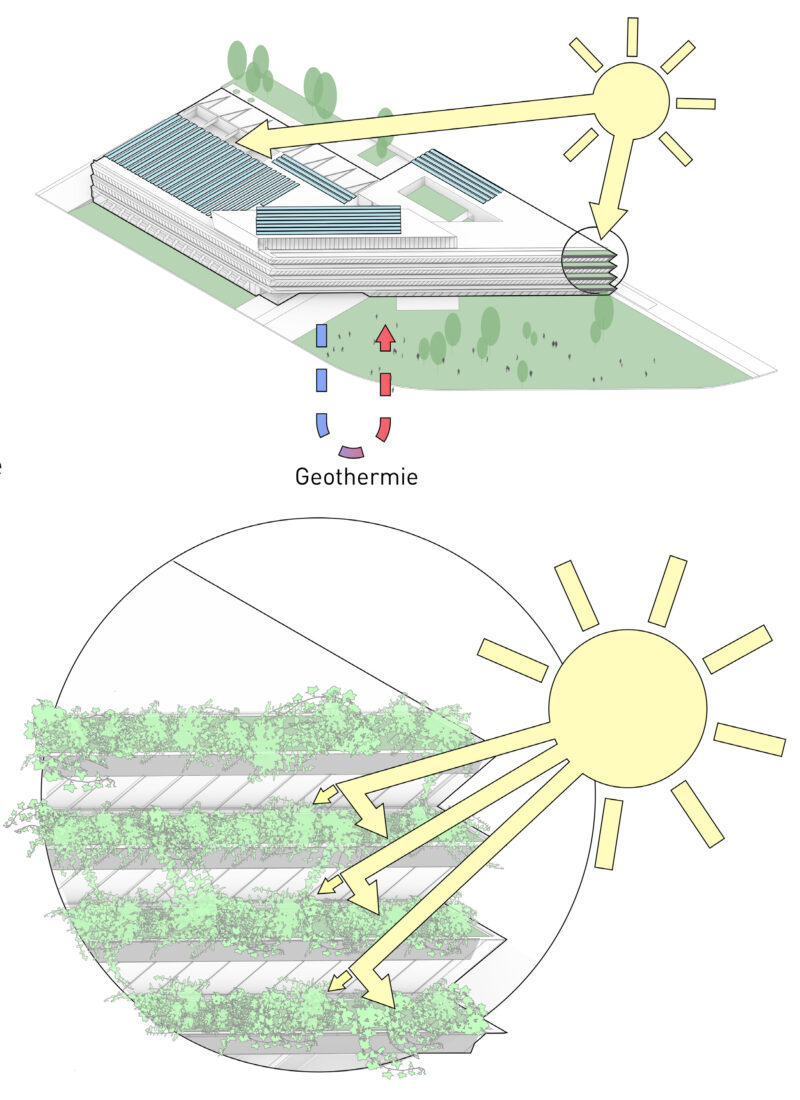
As already mentioned, a lantern-like structure on the roof level is planned for the staff unit as a separate, self-contained function. The helicopter landing pad on the north-eastern section of the roof on the same level can also be reached from here. Raising the storage level and slightly lowering the front garden provides a view of the RTW via a horizontal glass slit - thus communicating
the building as an operations center. The project is supplied with energy by means of geothermal energy, i.e. geothermal heat pumps in conjunction with a geothermal probe field (energy piles). This initially applies to the provision of heat in winter. In summer, the geothermal probes serve as a heat sink for room cooling, mainly in free cooling.
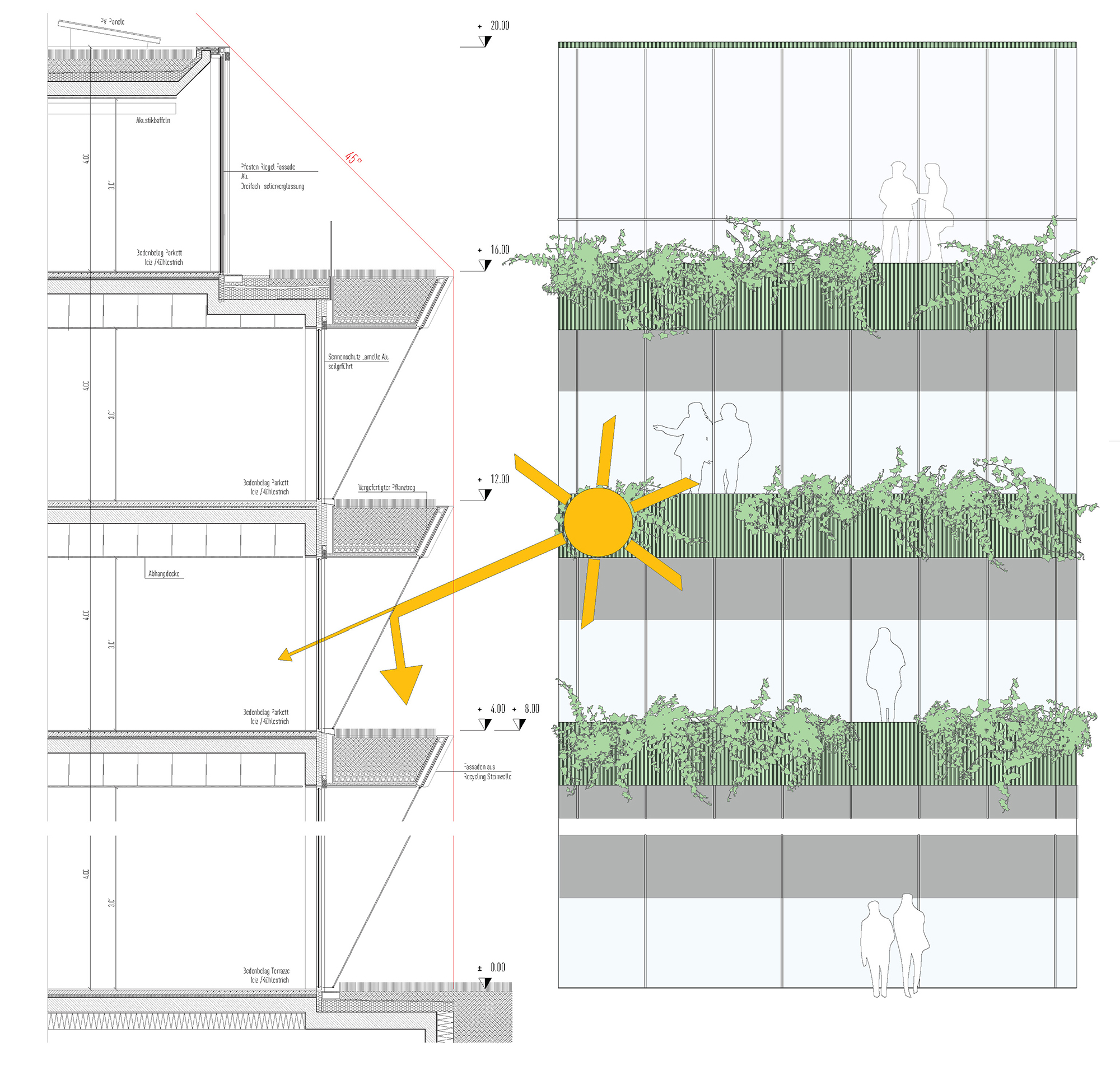
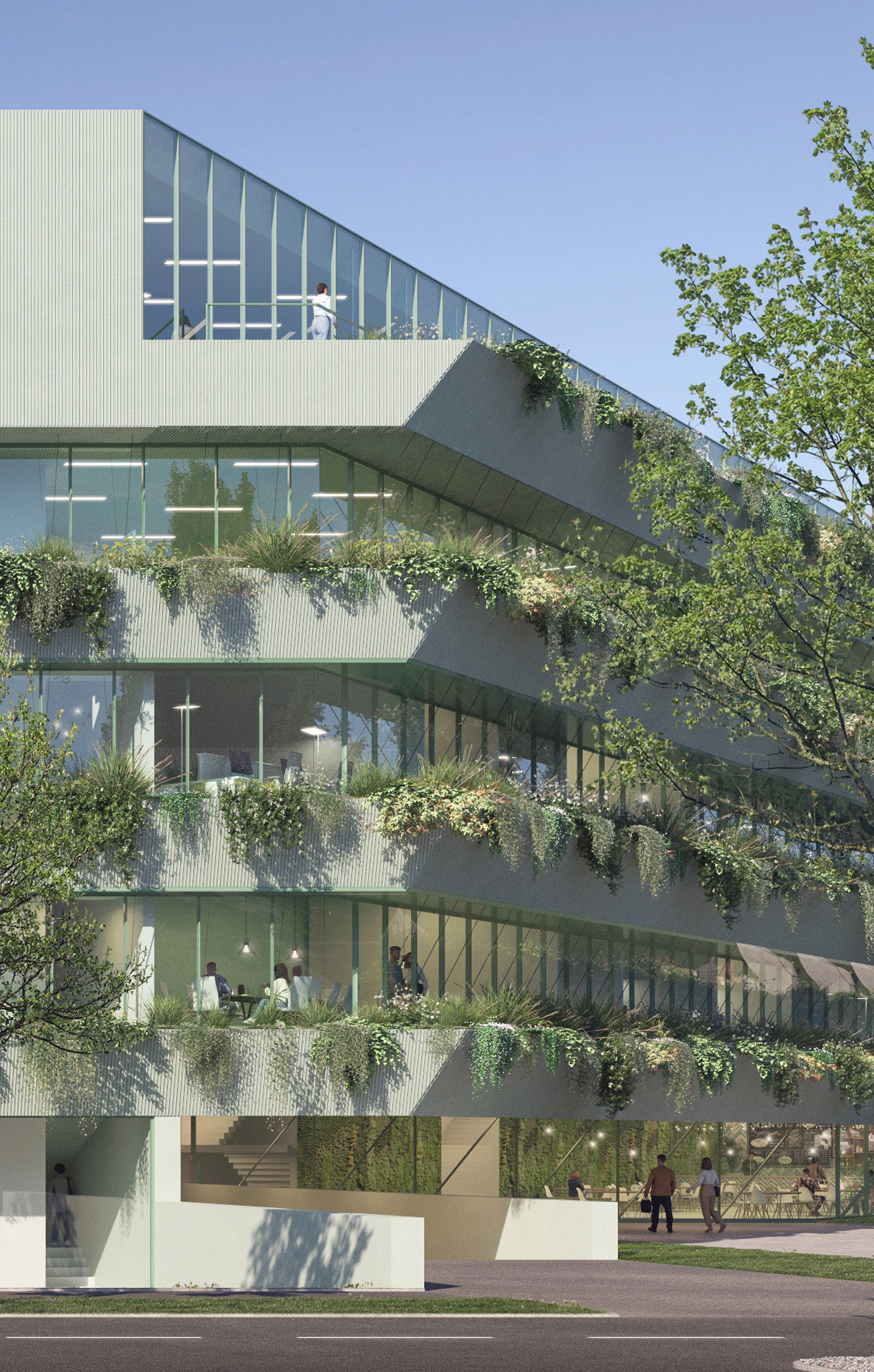
The building is climate-fit and presents itself as a green object: the folded-out façade strips along Seestadtstrasse and along the park create planting beds with sufficient substrate and at the same time reduce the solar input into the interior spaces. A solid green façade thus “speaks” to the public space. The opaque façade sections are clad with façade panels made of recycled rock wool. They are designed in a light color for the albedo effect and are accompanied by densely planted plant troughs.
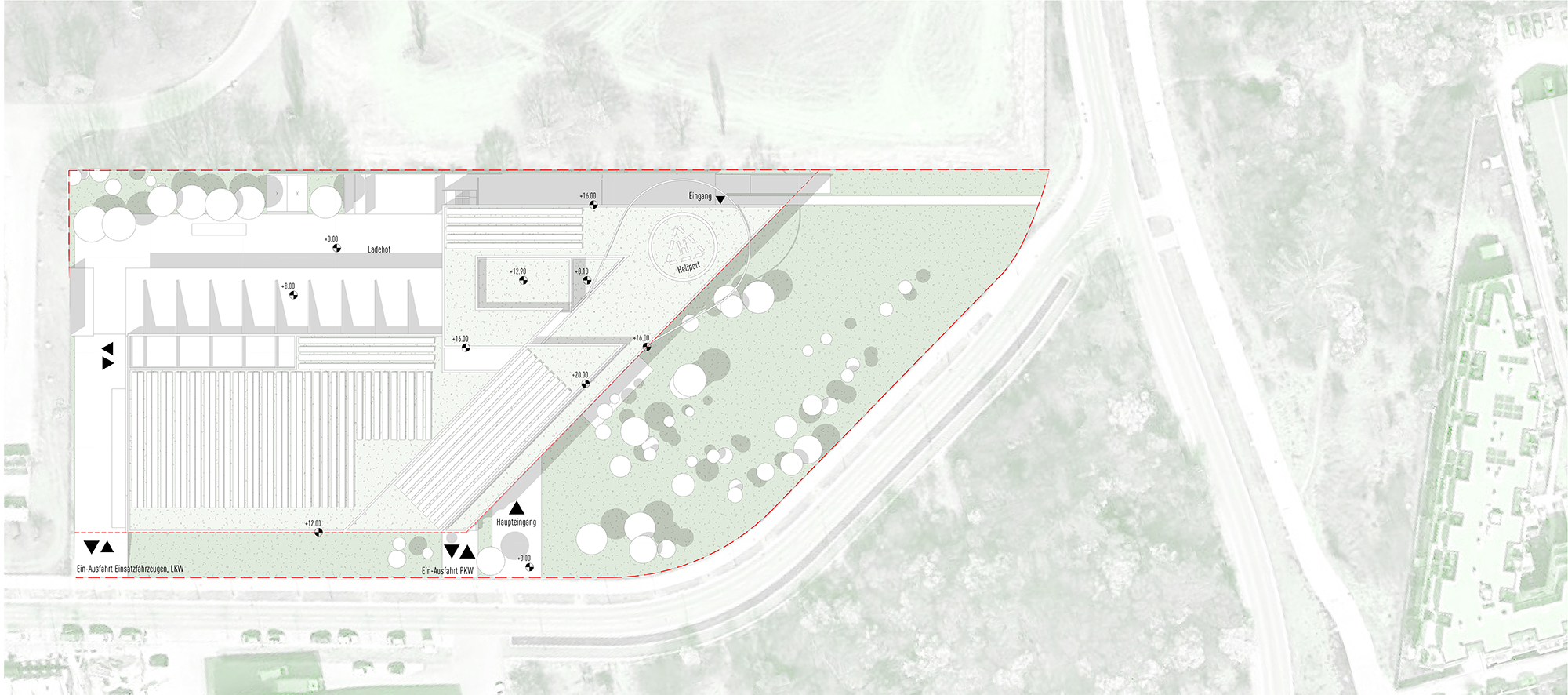
The health and safety center will be built on an existing green space. The nearby riparian forests of the Danube serve as a model in terms of biotope design. The aim is to create a climate accumulator that makes species protection and climate resilience a visible quality of the construction project.
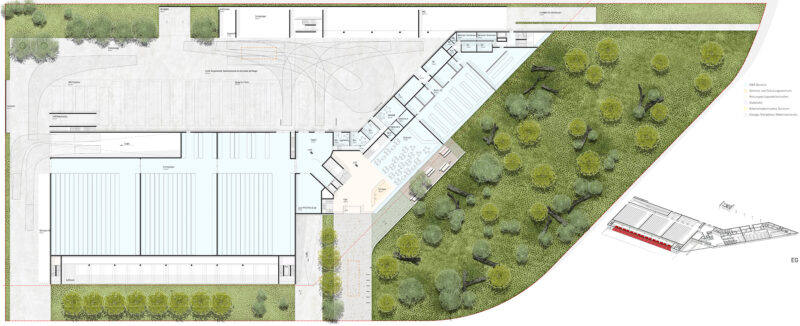
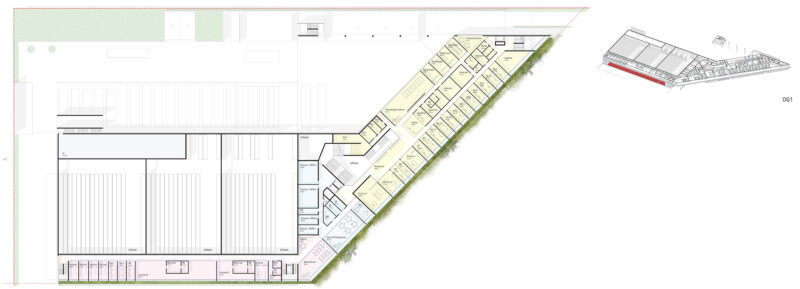
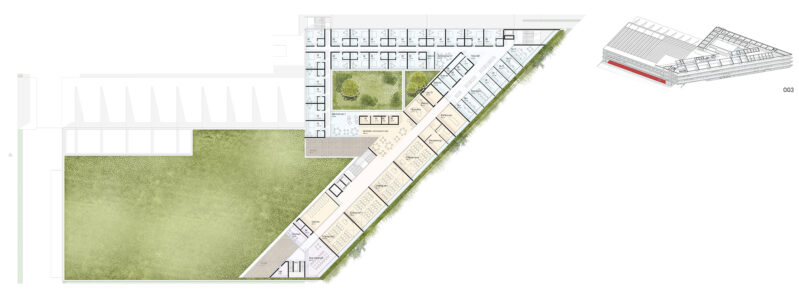

The main entrance is from Seestadtstraße. This leads into a foyer adjacent to the dining area, which can also be accessed from outside if necessary. There is an open terrace in front of the dining area. If only internal access to the dining area is required, this could simply be moved to the other staircase in the north-eastern part of the wing. From the foyer, a spacious staircase leads directly to the first floor, where the occupational health center is located. The necessary rooms for the emergency services are also located on the first floor along the street front. This wing is directly connected to the RTW garage by two staircases.
On the second floor, all seminar and training rooms as well as the administration are housed in the triangular head building. The training center extends to the 3rd floor. At the southern end of the parking wing is a meeting unit for the staff unit, which can be separated in the event of a crisis, but can be used as a backup for training operations in normal circumstances. The 3rd floor also houses the recreation and rest rooms for the KHD area. The staff unit on the roof is a lantern-like structure that can be read metaphorically like a blue light on the roof of the vehicles and also conveys the message of an emergency.


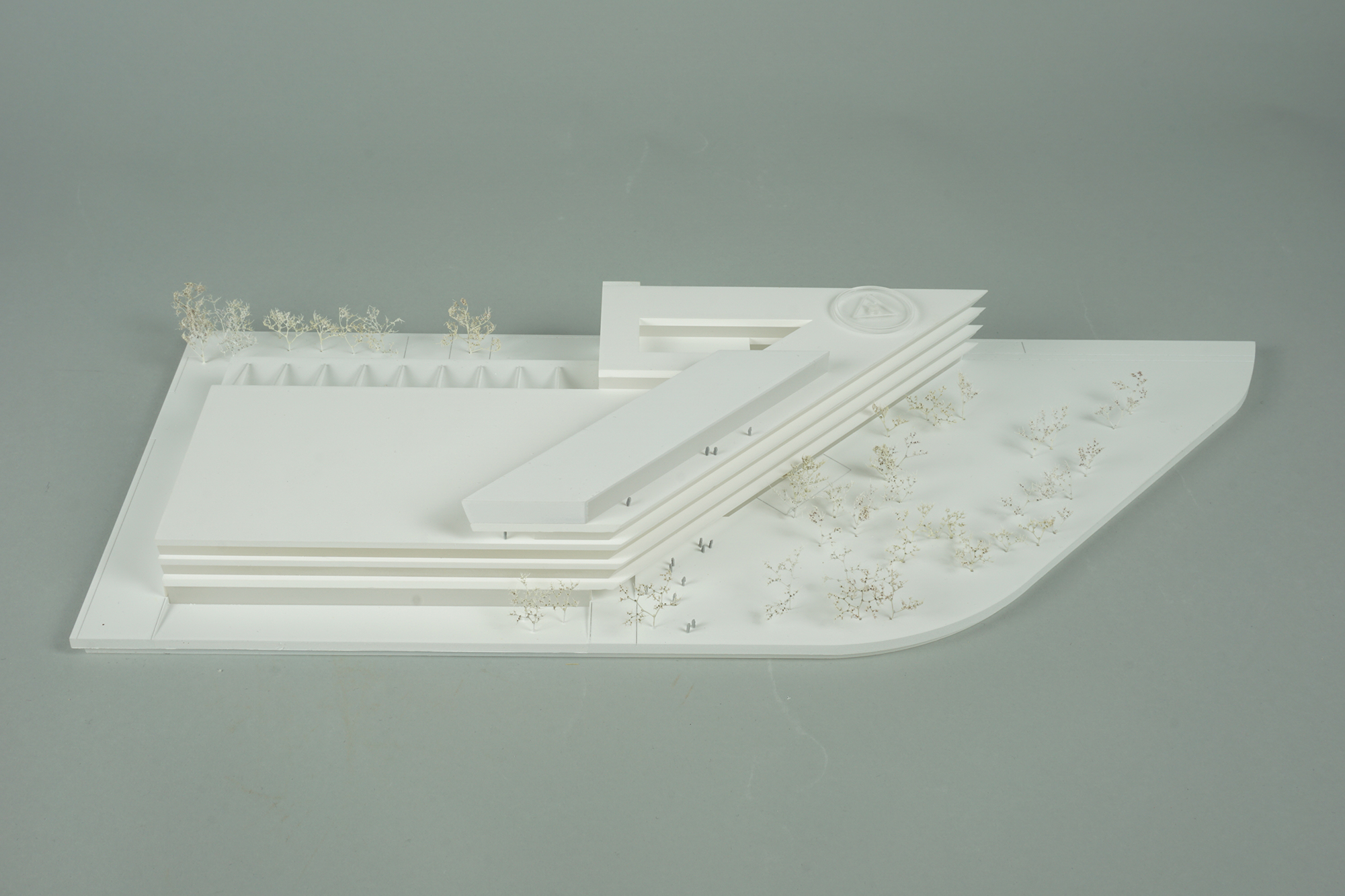
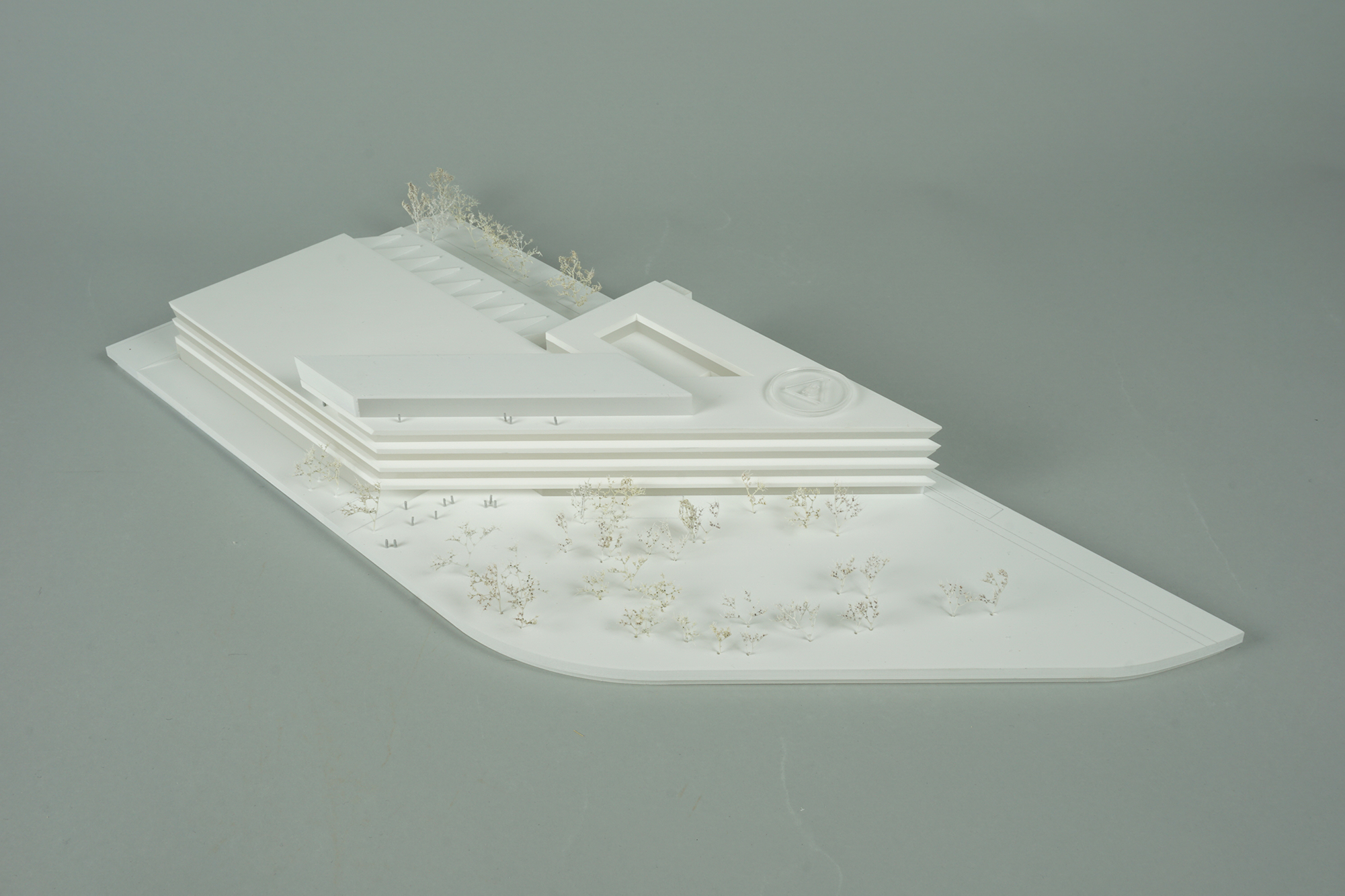
Architecture
Pichler & Traupmann Architects
Design team
Bartosz Lewandowski (Team leader)
Anna Chakhal Salakhova
Anna Gulinska
Rafal Szczyglowski
Client
Arbeiter Samariter-Bund Österreich, Vienna
Statics and structural fire protection
Norbert Rabl ZT GmbH, Graz
Building services
GAWAPLAN Haustechnische Anlagen Ges.m.b.H., Vienna
Traffic planning
TRAFFIX Verkehrsplanung GmbH, Vienna
Landscape planning
Lindle+Bukor - atelier für landschaft, Vienna
Hard facts
Start of planning: 2024
Usable floor area: 21.371 m²
Gross floor area: 22.540 m²
Location: Vienna Seestadt
Function: Rescue base, security competence center, logistics center, warehouse, training center, canteen kitchen, vehicle fleet
Scope: Invited competition
Renderings
Patricia Bagienski-Grandits, Vienna
Model
Harald Schmidt, Vienna
Award
2nd Place
